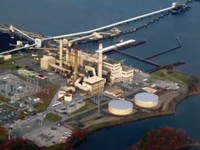Advertisement
Grab your lab coat. Let's get started
Welcome!
Welcome!
Create an account below to get 6 C&EN articles per month, receive newsletters and more - all free.
It seems this is your first time logging in online. Please enter the following information to continue.
As an ACS member you automatically get access to this site. All we need is few more details to create your reading experience.
Not you? Sign in with a different account.
Not you? Sign in with a different account.
ERROR 1
ERROR 1
ERROR 2
ERROR 2
ERROR 2
ERROR 2
ERROR 2
Password and Confirm password must match.
If you have an ACS member number, please enter it here so we can link this account to your membership. (optional)
ERROR 2
ACS values your privacy. By submitting your information, you are gaining access to C&EN and subscribing to our weekly newsletter. We use the information you provide to make your reading experience better, and we will never sell your data to third party members.
Pollution
Mercury move portends similar deregulation of air pollution by US EPA
Planned changes could mean weaker emission controls for chemical industry
by Cheryl Hogue
April 20, 2020

The US Environmental Protection Agency intends to expand recent changes to a rule that controls mercury emitted from power plants by extending the reform to air pollution regulations for chemical manufacturers and other sectors. These changes are likely to lead to more-relaxed regulations for air pollutants, say economists and former EPA officials.
On April 16, the Trump EPA revised the cost and benefits calculations for a 2012 rule which restricts emissions of mercury and other toxic air pollutants from power plants fired by coal or oil. The agency did so by no longer taking full account of the side benefits of this regulation. Specifically, the scrubbers that remove neurotoxic mercury from the exhaust of oil- and coal-fired power plants, also strip out particulate matter, which is linked to lung and cardiovascular problems. Under the previous calculus, which counted the side benefits of curbing particular matter, the public-health benefits outweighed the cost of the scrubbers.
But under the Trump administration’s revision, the EPA no longer includes side benefits of limiting particulate matter in its math.
EPA administrator Andrew Wheeler calls the changes “honest accounting.” The calculation of the benefits and costs of a regulation should take into account only what accrue from the pollutant the regulation directly targets, he says.
Without including the plusses from controlling particulate matter, the costs of controlling mercury emissions from power plants outweighs the benefits.
Because of this revised arithmetic, EPA now deems that the mercury regulation was not “appropriate and necessary,” as required by the Clean Air Act. This new determination paves the way for a legal challenge by power plants or the coal and oil industries against the mercury rule. Power plants have already spent billions to comply with the 2012 requirements, which remain in place for now.
Wheeler says changes to what counts as costs and benefits for the mercury rule “foreshadows” an approach the agency intends to institute for all Clean Air Act regulations. This includes many rules that affect the chemical industry.
In a recently published policy analysis, a group of economists says the EPA’s decision to disregard a regulation’s side benefits “is inconsistent with standard practice for economic analyses” as well as with current White House economic guidelines. The team, led by Joseph Aldy of Harvard’s Kennedy School of Government, says the revised mercury rule “undermines the EPA’s ability to appropriately compare the full set of costs and benefits of other regulations, both existing and new” (Science, 2020 DOI: 10.1126/science.aba7932).
If this approach is applied broadly to other Clean Air Act rules, it will “undermine the purpose of the agency” to protect public health and the environment, says Ellen Kurlansky, who was an EPA air policy analyst from 1996 until she retired in 2018.





Join the conversation
Contact the reporter
Submit a Letter to the Editor for publication
Engage with us on Twitter